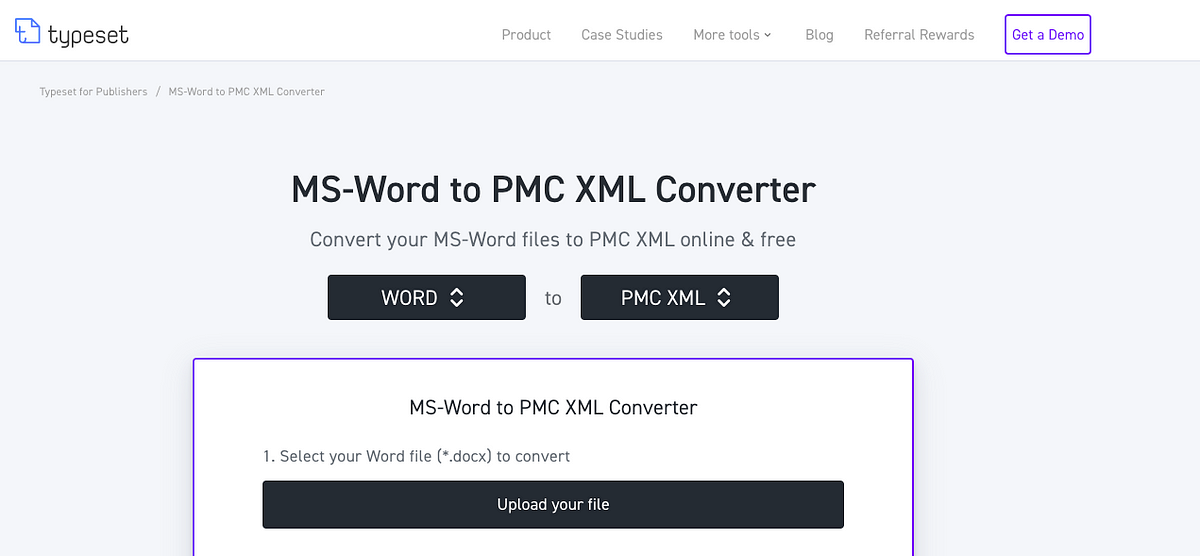
Introduction
MEDLINE is the NLM’s bibliographic journal citation database and forms the largest subset of PubMed. Since the 1960s, when it first started, MEDLINE has now amassed over 25 million references to life sciences and biomedical journal articles. Some of these references go back to 1946. Journal submissions for MEDLINE are reviewed by the Literature Selection Technical Review Committee (LSTRC) and on acceptance are made searchable on PubMed.
Getting Indexed in MEDLINE
There are several considerations and content requirements that journals need to meet in order to be presented to the LSTRC for review.
Mandatory requirements
If you meet the requirements below, you should consider applying for MEDLINE. If not, check the requirements for PMC covered in the next section — they are slightly more relaxed and PMC maybe an easier way for your articles to show up on PubMed. (To understand how to get indexed in Pubmed: Visit How to Get Your Articles Indexed in PubMed)
- Journal’s primary scope should be in biomedicine or life sciences.
- Journals should be at least two years old. Rare exceptions to this rule are made, in which case 12 months is the bare minimum.
- The journal should meet the requirements outlined in the Collection Development Manual of the National Library of Medicine.
- Journals have to provide XML tagged citation and abstract data. Refer to the PubMed XML guide.
- Article titles and abstracts must be in English
- Journals must have an ISSN registered with issn.org.
- The journal should have published at least 40 peer-reviewed articles.
- The journal should not have been rejected by PMC within the last two years.
Electronic-only journals have to fulfill three additional requirements:
- Provide XML-tagged data of its bibliographic citations
- Provide robust, current access to all of its content
- Have arrangements for its content’s permanent preservation and public access.
To fulfill 1 above, I presume that you have a MS-Word/ PDF file. The Medline XML is similar to PMC XML. You can use online XML converters to perform the process. SciSpace (Formerly Typeset) is a great example of one such high quality converter. You can request a Medline/ PMC XML converter by reaching out below.)

To fulfill requirements 2 and 3 above, NLM recommends submitting the journal and its full-text articles to PMC. However, journals are allowed to make alternative arrangements that work with MEDLINE.
Review criteria
- Scope: Journals that primarily cover core biomedical subjects are considered for review.
- Quality of content: Validity, importance, originality and how much the journal’s contents contribute to the coverage of the field it is aimed at are key factors that applications are judged by.
- Quality of editorial work: The committee examines the journal’s editorial process and ethics. Journals should demonstrate how they select articles and their external peer review process. They should also disclose statements indicating adherence to ethical guidelines and submit evidence that authors disclose any financial conflicts of interest. Timely corrections of errata, the objectivity of published content and responsible retractions where required are important. Publisher history, longevity, quality of publications, adherence to publication and business best practices, promotion of editorial integrity, and involvement with the scientific community are also examined.
- Production Quality: Journals are also assessed on the quality of the layout, graphics, printing, and illustrations.
- Audience: Journals should fit the audience profile of MEDLINE which is intended primarily for those in the health field, including practitioners, allied health professionals, nurses, researchers, educators, admins, and students.
- Publication requirements: The journal must have an ISSN, should be issued under a common title over time, and should be intended to be published indefinitely.
- English abstracts: Journals of all languages are welcome. However, the articles must contain English abstracts.
- Conformance to standard guidelines and best practices: The committee also checks whether your journal conforms to Recommendations for Conduct, Reporting, Editing, and Publication of Scholarly Work in Medical Journals from ICMJE and the joint statement on Principles of Transparency and Best Practice in Scholarly Publishing issued by COPE, DOAJ, WAME, and OASPA.
All good? Let’s move on to filling in the application form.
Filling the Application for MEDLINE
To submit your journal for review, you’ll need to access the MEDLINE Publisher Portal. You can either send in your application as a guest or register on the portal. It is preferable to register as it saves your application so you can return and complete unsubmitted applications later, plus it has an interface to allow tracking of submitted applications.
After signing in, click on ‘Start New Application’ to start filling in your application form.

You’ll be asked for contact details. Please share an email address that is checked regularly and will stay active for at least a year from now.
After sharing your contact details, you have to fill in the six sections that will be used to review your journal:
Journal Information
Language Information
Journal Details and Policies
General Publisher Information
Editorial Management and
Publisher Policies.
The NLM has published the format of the application in a pdf document that can be downloaded here: Information needed for Submitting an Application in the MEDLINE Publisher Portal.
What happens next
The LSRTC meets thrice a year to review journals for indexing in MEDLINE — February, June and October. Journals to be reviewed for each meeting are decided four months before each meeting. About 160 journals are examined at each meeting and about 12–15% of these are recommended for inclusion in MEDLINE after passing through the review criteria outlined above.
Essentially, be ready to wait for six months to hear back on the acceptance or rejection of your application.
If your journal is rejected: Tough luck! You’ll have to wait for at least two years before you can resubmit your journal for review. If your journal is rejected in the second and subsequent reviews as well, then the waiting period increases to three years between reviews. You can request NLM for the review summary sheet of your journal to get an idea of why your journal was rejected.
If your journal is accepted in MEDLINE: Congratulations! It will show up on NLM’s website on the New MEDLINE Titles page. You will be required to provide citations and abstracts to NLM as XML-tagged data within six months of acceptance. For access to journal articles, you have to grant NLM immediate access to your journal’s content via your journal website or a third-party service. Publishers of electronic-only journals have to meet the additional requirements outlined earlier within six months from the date of acceptance to allow indexing to begin.
The SciSpace publisher simplifies the creation of journals and manages them efficiently. XML-first workflows simplify and streamline the publishing process, reducing cost and increasing visibility.

Your journal templates can be easily accessed through SciSpace and easily typeset to match global standards in just seconds thanks to its modern publishing process.
Before you go
Complete List of Resources
A.) General Resources
SciSpace: For automatically generating MEDLINE compliant article XMLs.
Difference between MEDLINE, PMC, PubMed
B.) Getting Indexed in MEDLINE: Resources

Information needed for Submitting an Application in the MEDLINE Publisher Portal
FAQ for Publishers
FAQ for electronic journals
Publisher Portal







